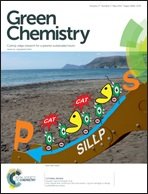Pollution Prevention (P2) Analyses and Publications
The materials within the tabs below describe the pollution prevention efforts of certain Toxics Release Inventory (TRI) industry sectors and facilities, and highlight benefits of implementing P2 activities. EPA provides this information to showcase progress in preventing pollution and to encourage industry to move towards preferred waste management practices and safer alternatives.
On this page:
P2 Analysis by Sector
Successful P2 practices often target a specific industry process or industry sector. Taking a sector approach to P2 can highlight activities that can be replicated by other facilities in the sector and reveal opportunities for better waste management practices. The following profiles present information on how certain sectors manage chemical waste and on available P2 opportunities.
The highlighted sectors are national emphasis areas (NEAs) that EPA’s Pollution Prevention Program established for the P2 Grants Program. P2 Grants provide technical assistance to businesses in the NEA sectors to help them develop and adopt source reduction practices.
P2 Spotlights
P2 Spotlights focus on specific toxic chemicals and describe the P2 efforts of certain industry sectors and facilities. Many of these chemicals were also designated as priority chemicals for risk evaluation under the Toxic Substances Control Act (TSCA). Where available, links are provided in the table below on risk reduction efforts including risk assessments and alternative assessments. EPA provides the P2 Spotlights to:
- Highlight P2 accomplishments of TRI-reporting facilities,
- Spur discussion on possible chemical and process alternatives, and
- Encourage industry to move towards preferred waste management practices and safer alternatives
| Spotlight | Chemical | Industry | Other Resources |
|---|---|---|---|
| Solvent chemicals | All | ||
| Reducing Metal Waste (pdf) | Metals (e.g., nickel, chromium, zinc, lead) | Auto, Aerospace, Fabricated Metals | |
| Reducing Solvent Use (pdf) | Solvents (e.g., trichloroethylene (TCE), xylene, sec-butyl alcohol) | Auto, Aerospace, Fabricated Metals | Safer Chemicals Ingredients List |
| Reducing Styrene Waste (pdf) | Styrene | Plastics Products | |
| Reducing DecaBDE Oxide Waste (pdf) | Decabromodiphenyl oxide (DecaBDE) | All | Alternatives Assessment |
| Reducing Glycol Ether Waste (pdf) | Glycol Ethers | Fabricated Metals, Transportation Equipment, Chemical Manufacturing | Safer Chemicals Ingredients List |
| Reducing DCM Waste (pdf) | Dichloromethane (DCM) | Pharmaceuticals, Electronics | Risk Evaluation |
| Reducing TCE Waste (pdf) | Trichloroethylene (TCE) | Fabricated Metals | Risk Assessment |
Additional resources:
P2 Publications

Measuring the impact of source reduction uses a “differences-in-differences” approach to assess more than 25 years of TRI data on source reduction projects. The results which were published in Environmental Science and Technology in 2015 (Environmental Science & Technology, 2015, 49 (21), pp 12951–12957).

The Utility of the TRI in Tracking Implementation and Environmental Impact of Industrial Green Chemistry Practices in the United States describes analytical options for tracking implementation of green chemistry practices and assessing the environmental impact of such practices (InTech, 2018, pp 147 - 167).

On the design of safer chemicals: a path forward offers insights on how existing commercial chemicals for which safer, commercially viable alternatives are most needed can be identified and prioritized as an important component of sustainable development (Green Chemistry, 2016,18, pp 4332-4347).

Can pollutant release and transfer registers (PRTRs) be used to assess implementation and effectiveness of green chemistry practices? A case study involving the Toxics Release Inventory (TRI) and pharmaceutical manufacturers demonstrates that TRI is uniquely well-suited for assessing the progress made by different industry in implementing green chemistry practices and the effectiveness that such practices have in preventing pollution (Green Chemistry, 2015,17, pp 2679-2692).



